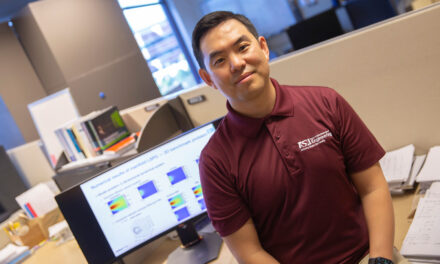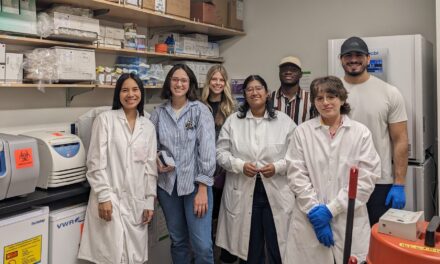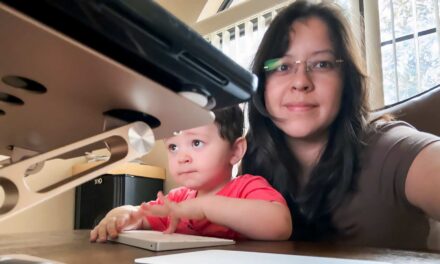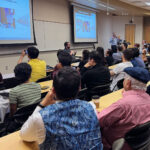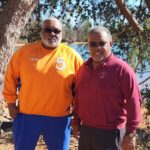
NSF CAREER awards advance research in biosensors, cardiovascular fluid dynamics
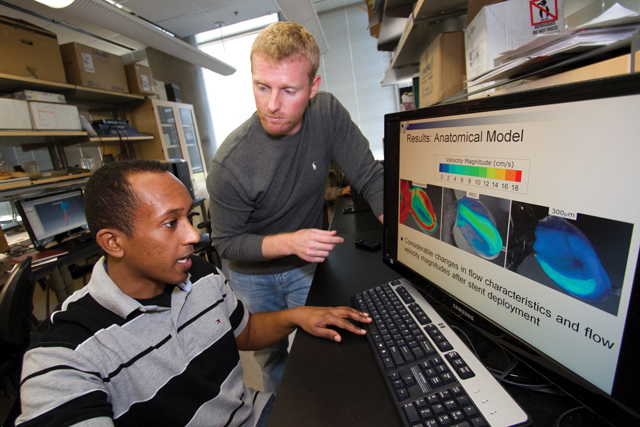
Supported by National Science Foundation CAREER Awards, two faculty members are advancing fundamental research that can have significant impacts on disease diagnostics.
Michael Goryll, assistant professor, School of Electrical, Computer and Energy Engineering, is recreating the functionality of a natural ion channel using a solid-state nanopore. Goryll is working to create a more robust, versatile solution using electrostatically controllable solid-state nanopores.
One aspect of his research is gaining a better understanding of how natural channels allow some ions and molecules to pass through the channel, but not others. That knowledge is used to reproduce electric field geometries that repel or attract molecules in a similar way to natural channels.
The use of engineered nanopores as biosensing elements is a rapidly developing area. The sensors can be used for a wide range of applications from testing water quality to disease diagnostics.
Goryll cites drug discovery as an area of particular interest. For example, several drugs have been pulled from the market, or denied regulatory approval due to potentially life threatening reactions including clinical arrhythmia. Preclinical testing for these interactions can only be done by ion channel research.
Goryll and students in his lab have already made advances in ion channel research, including development of an acrylic cup array that allows parallel measurement of four channels at the same time and a multichannel, low-noise amplifier, which allows recording of the extremely small ionic current through the ion channels.
David Frakes will further his research of cardiovascular fluid dynamics and the impact on the onset, progression and treatment of major diseases such as heart disease, stroke and aneurysms.
Frakes, assistant professor in the School of Biological and Health Systems Engineering and the School of Electrical, Computer and Energy Engineering, is focusing on advanced simulation and modeling of intracranial aneurysms (ICAs) to help design and execute optimal patient treatments.
ICAs account for approximately 20,000 deaths in the U.S. alone. Current endovascular devices used to treat ICAs have led to a 50 percent reduction in the death rate over the last decade. Frakes’ research aims to reduce that even further.
ICA treatment is a relatively tractable fluid dynamic problem, Frakes says. Unlike vessels near the heart that require very complicated simulations, cerebral vessels can be modeled more robustly, which presents an attractive starting point for cardiovascular fluid dynamic research. Yet the general methods developed through this research hold promise for much wider application in disease treatment.
Frakes is using imaging-driven engineering tools, physical and computational modeling, and fluid dynamic measurement and simulation as the methodological basis for development of advanced device-based cardiovascular disease treatment.


